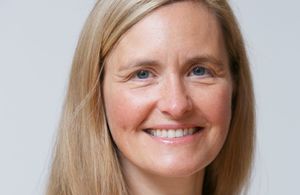£1.3 million in contracts awarded to fund telexistence technologies
- £1.3 million overall funding allocated to three innovative organisations to develop telexistence technologies
- Funding achieved through Telexistence: Phase 2, run on behalf of the Defence Science and Technology Laboratory (Dstl) and the Nuclear Decommissioning Authority (NDA)
- Telexistence: Phase 2 sought innovations to develop a complete telexistence system, integrating telepresence, robotic and haptic technologies on to a single platform
The Defence Science and Technology Laboratory (Dstl), the Nuclear Decommissioning Authority (NDA) and the Defence and Security Accelerator (DASA) are pleased to announce that three innovators have won a share of £1.3 million funding to develop cutting edge telexistence systems.
Telexistence technology has the potential to give those working in hazardous environments the capability to undertake tasks without physically being present, which can decrease risk and reduce the logistical burden associated with dangerous operations. Innovators were tasked with evaluating their innovations against use cases in:
- Specialist Nuclear Decommissioning Tasks
- Explosive Ordnance Disposal (EOD)
- Defence and Security Medical applications
Mark Hodder, Project Manager, Defence Science and Technology Laboratory said:
The DASA Telexistence: Phase 2 competition has been a great success in finding the latest innovators to collaborate with Dstl and NDA to develop a complete system using science and technology to integrate and create a platform using Telepresence, Robotics and Haptics together to achieve results.
Andrew Gray, Innovation Delivery, Manager Nuclear Decommissioning Authority said:
We are excited to be working with DASA and Dstl on this competition. Advancing technologies in the area of telexistence will help us deliver our decommissioning mission more safely, securely and efficiently in enabling us to move humans away from harm. It’s our aim to reduce decommissioning activities carried out by humans in hazardous environments by 50% by 2030. We are really encouraged to see such fantastic solutions being put forward by the supply chain.
Congratulations to the Telexistence: Phase 2 winners
Four projects from 3 innovators have been awarded Telexistence: Phase 2 funding to fast-track their novel ideas. The winners are:
TNO
TNO’s innovation HaBiTS, (Haptic Bimanual Telexistence System), comprised of robotic arms and effectors, aims to provide NDA operators with a high sense of telexistence and with the critical visual, auditory, and haptic cues required for effective, efficient, and safe task execution.
Sheffield University
The University of Sheffield’s MediTel (Medical Telexistence Platform) aims to deliver next generation medical telexistence technologies that integrate telepresence, robotics, and haptic technologies on one platform. This will help enable real time user interaction with remote environments and consultant interfaces to enhance Combat Medic Technician and Regimental Aid Post capabilities to reduce human risk of injury. The project is a collaboration between the Advanced Manufacturing Research Centre (AMRC) and the Faculty of Engineering departments of Automatic Control and Systems Engineering (ACSE) and Sheffield Robotics.
Cyberselves Universal Ltd.
Cyberselves are undertaking two projects aligned to different use cases, but using similar system components. Project one, TEL-ND, aims to design a cutting-edge telexistence solution that removes NDA operators from risk. The innovation enables operators to carry out their tasks remotely from a location remotely, utilising a robot, without adversely impacting performance.
Project two, TEL-MED, aims to design an innovative telexistence product that allows a thinly spread medical workforce to be present in multiple places at once while also removing them from radioactive, chemical or biologically compromised environments.
Telexistence: Phase 2 funded projects will run over the next 10 months and be placed through a series of representative trials, with results delivered in summer 2023.
What happened in Telexistence: Phase 1
Telexistence: Phase 2 follows on from Phase 1, where £570K worth of contracts was awarded to:
- Veolia Nuclear Solutions
- Cyberselves Universal Ltd.
- Createc
- L3Harris Technologies, Inc – Robotics Division
- Holoxica Limited
- University of Leeds
- TNO
- Centre of Excellence in Terrorism, Resilience, Intelligence and Organised Crime Research (CENTRIC) at Sheffield Hallam University
- Digital Kinematics Ltd
Telexistence: Phase 1 aimed to understand the technical possibilities and potential applications of a telexistence capability for the defence and security community.

